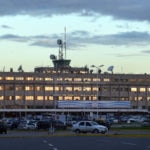Tourism in Argentina: taking care of unfinished business
A chronic deficit in infrastructure for telecommunications and logistics has hindered Argentina’s competitiveness in the tourism industry. Even so, since 2015 the country has moved up seven positions in the World Economic Forum’s biannual report on Latin America.

Local prices, measured in hard currency terms (U.S. dollars, Euros, etc), are high. That’s why Argentina is an expensive country for foreign visitors. It also explains the wave of Argentine residents who are taking international vacations and buying goods abroad.
The tourism balance from the middle of the year shows 787,400 more people left Argentina to travel than entered the country as foreign tourists. In terms of currency movements, Argentines who leave from the Ezeiza and Aeroparque airports spend nearly twice as much ($2.53 billion) as the foreign tourists in the country ($ 1.38 billion) who stay an average of 12.9 nights – 26.7 nights for Europeans – according to the National Institute of Statistics and Census’ (INdEC) International Tourism Survey.
Persistently high inflation brought about price distortions. For that reason, the deficit between foreign currency inflows and outflows from tourism has been constantly widening. During the first six months of the year, that deficit was 30% higher than the same period a year earlier.
But Argentina’s vast territory lacks infrastructure in telecommunications and logistics. This restricts the growth of the traditional tourist attractions in Buenos Aires, Bariloche, or the Igazú waterfalls, as well as in Córdoba, Santa Cruza and Tierra del Fuego.
The aggressive road and public works plan, as well as the airspace flexibility plan President Mauricio Macri’s government is carrying out , both seek to expand tourist routes and lower the cost of domestic travel.

Low cost companies' offer could benefit domestic tourism.
Progress was encouraging during this last period covered by the biannual 2017 Travel and Tourism report on competitiveness presented at the World Economic Forum for Latin America. Argentina rose seven positions from 2015, to 50th in the ranking of 136 countries, with improvements in all its indicators.
In the first half of the year, there was 10.7% more movement compared to the same period in 2016, according to the INdEC Survey on Hotel Occupancy.
While the amount of income in the country from Ezeiza and Aeroparque airports is currently the second-lowest in a decade, the amount of Argentines leaving from the same airports was at a record high – twice that of 2010"
Of the 10.1 million hotel registrations, 8.1 million were Argentine residents (an increase of 11.9%), who occupied 19.5 million spots (4.4% more). During the same period, 1.9 million hotel registrations were made by foreigners (up 6.4%), using 4.5 million beds (up 4.7%). The highest demand was for rooms in four-and five-star hotels.
Climate change
High temperatures in the fall and winter helped to increase tourism around the middle of the year. In June alone, hotel occupancy rose by six percent from the average for the first six months of the year, impacted by the summer. Occupancy was the same for both residents and foreigners. The regional distribution shows that the climate affected this exceptional behavior, as the Litoral area had the greatest accumulated growth, with 23.2%; Córdoba had 8.8% and Buenos Aires, 7.3%.
Nevertheless, capacity was not covered for the country’s 11 million tourists, a number which is on the rise, the Undersecretary of Argentina’s Tourism Investments Ramiro Alem said at a press conference.
The Argentine Federation of Associations of Travel and Tourism Companies (FAEVYT) reports that 25% of the 7.6 million retirees or Argentines over 60 have been enjoying discounts of up to 50% on airlines and accommodation and they plan to continue doing so. Meanwhile the millennials – with the rise of the Internet and e-commerce – include getaway plans as part of the expenses allowed by their salaries. They prefer this over investing in tangible assets, as did previous generations. According to the Boston Consulting Group, seven in ten millennials want to travel to all the continents. With this goal in mind, three in four have tourism apps on their smartphones.
The increase in flight options through new, low-cost companies which have started to establish themselves in the last quarter is expected to have an immediate impact on domestic tourism"
A survey by the travel Company TTS Viajes expects Argentine families to pick packages for Playa del Carmen, Brazil, Cancún, Disney and Iguazú waterfalls this summer season. The waterfalls are a common getaway for long weekends in the spring, while Brazil and Chile are popular due to their proximity and appeal for shopping trips. As for cruises, the most popular ones are to Brazil, the Bahamas from Miami, Disney and the Greek Islands.
This local context and the structural reforms being carried out with public investment are taking place in the framework of the tremendous potential of Latin America’s travel and tourism industry. It represents only 3.5% of international travel in the world and in 2015, there were 41 million international arrivals to the region, an average increase of 5% in the year.